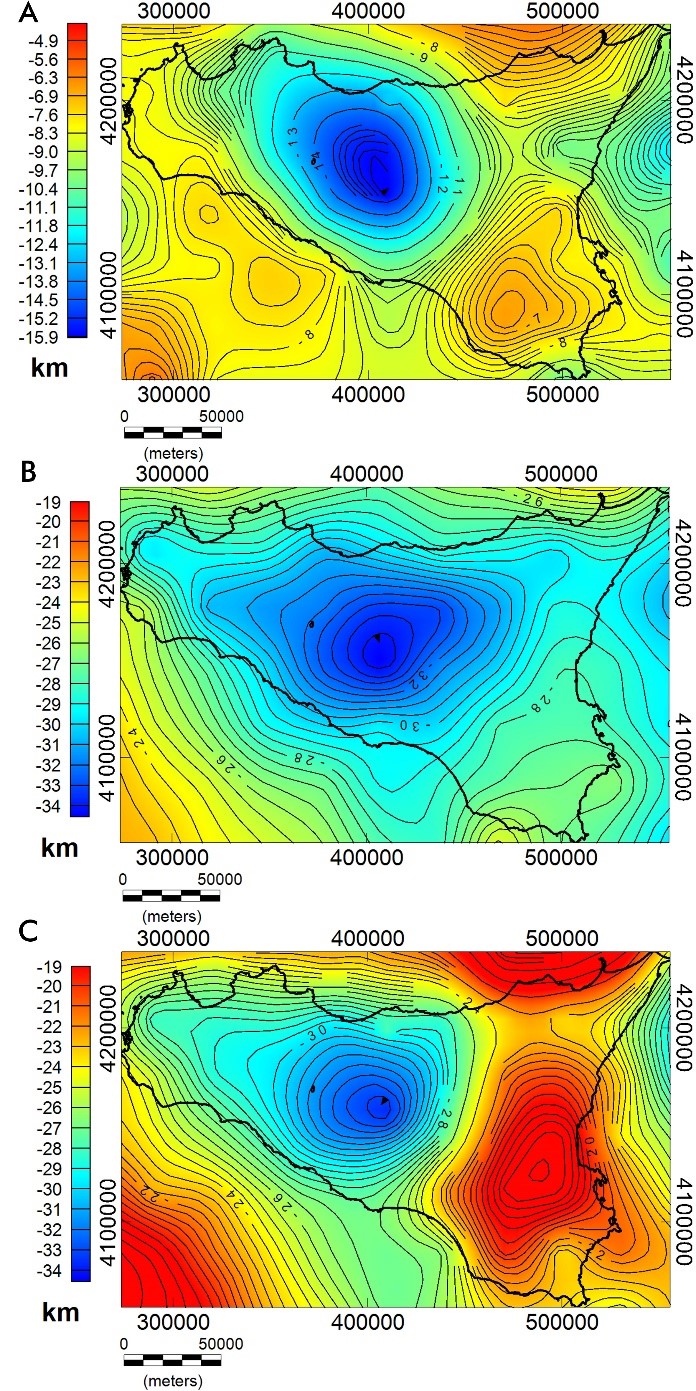Crustal structure of Sicily from modelling of gravity and magnetic anomalies
Pubblicato articolo dalla rivista del Gruppo Nature con il contributo di ricercatori Ismar-Cnr
Thursday 08 October 2020
Maurizio Milano, Kelemework Yemane, La Manna Mauro, Fedi Maurizio, Montanari Domenico, & Iorio Marina. Crustal structure of Sicily from modelling of gravity and magnetic anomalies. Scientific Reports, 10, Article number: 16019. 29 Settembre 2020
https://doi.org/10.1038/s41598-020-72849-z
Scientific Reports, a Nature Research Journal, has recently published a paper entitled “Crustal structure of Sicily from modelling of gravity and magnetic anomalies”. It includes results of a geophysical study carried out by a team of scientists from ISMAR-CNR, IGG-CNR and University of Naples Federico II, aiming at defining the geological structure of Sicily, which has always played a key role in the understanding of the dynamics of the Apennine-Tyrrhenian system.
The study of the deep crust of Sicily helps to characterize the geological evolution of the central-western Mediterranean.
The authors reconstruct the main boundaries of the shallow and deep crust of Sicily using specific inversion techniques and spectral analysis of high-resolution gravimetric and magnetometric data.
The team took advantage of the fact that, so far, the area has been extensively investigated from geological and geophysical studies.
The results published in the Scientific Reports article, are novel and significantly different from those obtained to date as they show in a three-dimensional model depth maps of the crystalline basement and Moho boundary from which the main crustal features of Sicily are derived. The most typical feature observed is the deep depression beneath the Caltanissetta basin where the Moho reaches a maximum depth of 35km. Similarly, for the first time, a Curie isotherm map is obtained defining a variable thermal setting between eastern and western Sicily, in good accordance with the available heat flow data.
Besides their contribution to the present knowledge of the shallow and deep crust of Sicily, this study shows how combining potential field data and their high-resolution interpretation methods can be successfully used, to investigate large scale structures and deep geothermal behaviors in similar complex geological scenarios all over the world. Such understanding of the crustal thermal setting could give, moreover, a new contribution to the evaluation and sustainable exploitation of geothermal resources.

Map of the top of the crystalline basement (A), of the Moho (B) and of the Curie isotherm (C) obtained from the spectral analysis of gravimetric and magnetic data of Sicily.




